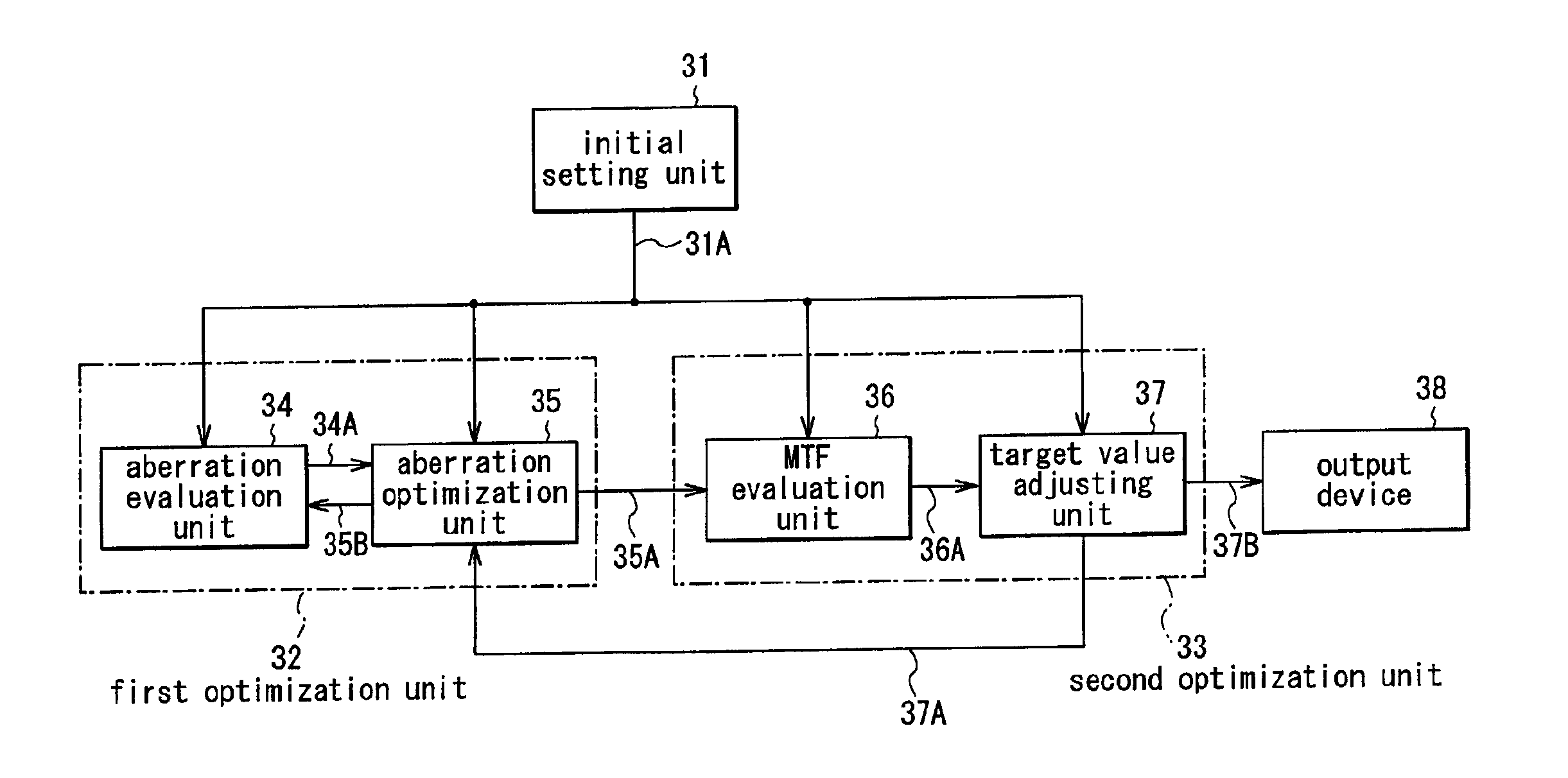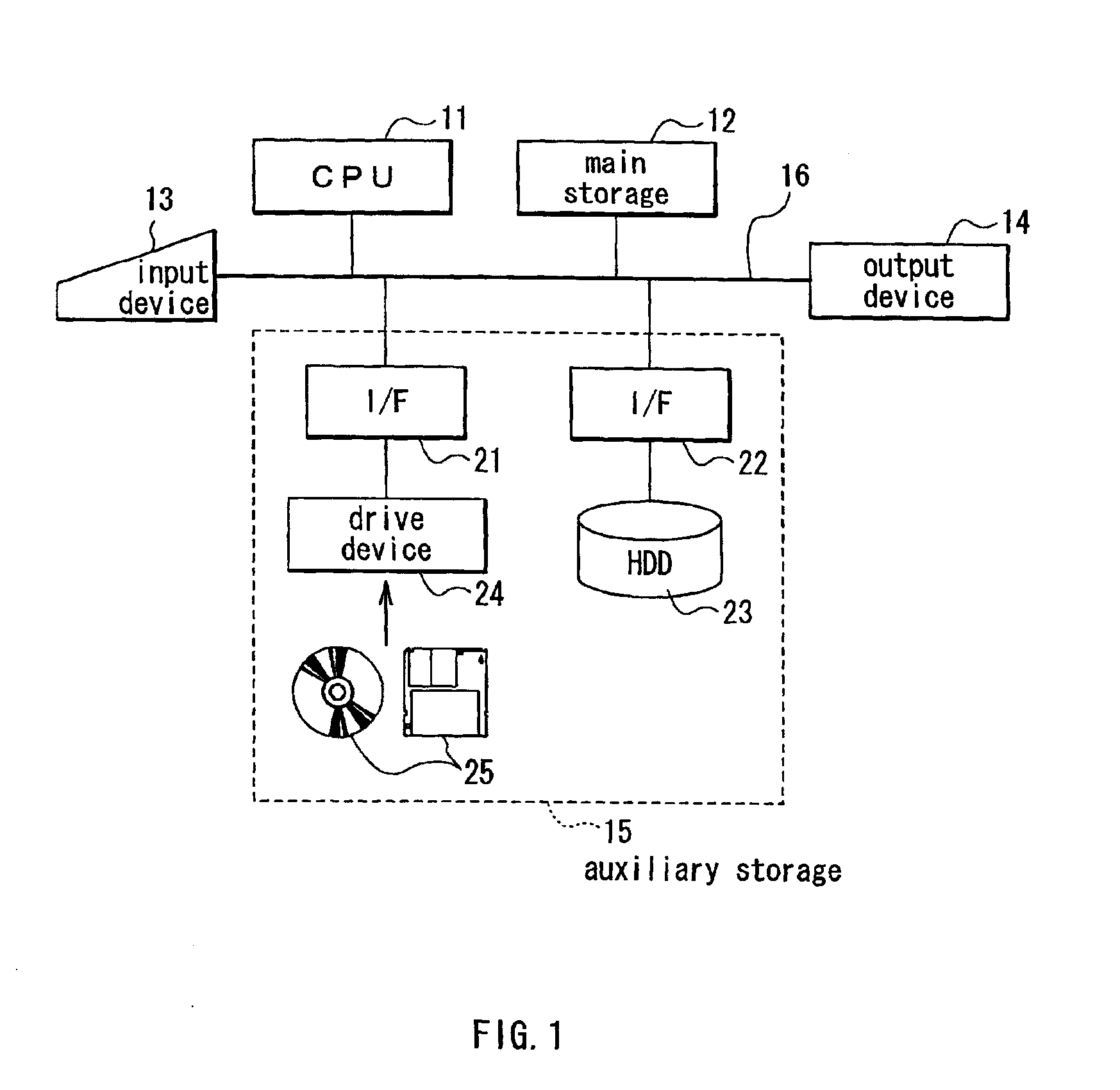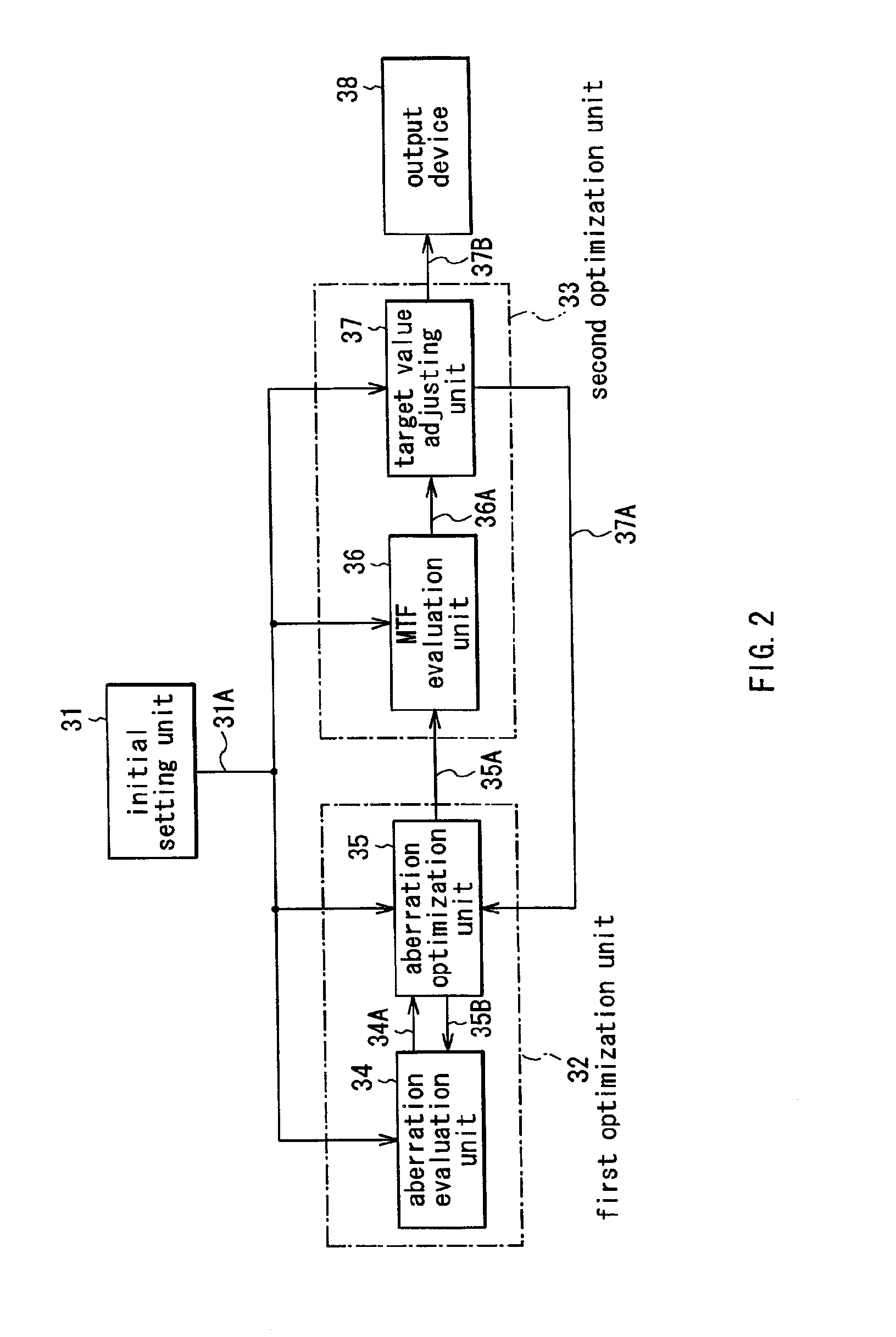Method and apparatus for optimizing optical system and recording medium with program for optimizing optical system
a technology of optical system and recording medium, applied in the direction of adaptive control, reradiation, instruments, etc., can solve the problems of difficult to effectively optimize lenses, other optical performance such as an evaluation of mtf, not always optimized,
- Summary
- Abstract
- Description
- Claims
- Application Information
AI Technical Summary
Benefits of technology
Problems solved by technology
Method used
Image
Examples
first embodiment
[First Embodiment]
[0065]FIG. 1 shows the configuration of hardware of an apparatus for optimizing an optical system according to a first embodiment of the present invention. The apparatus for optimizing an optical system of the embodiment is a computer. More specifically, as shown in FIG. 1, the apparatus for optimizing an optical system comprises a central processing unit (CPU) 11, a main storage (internal storage) 12, an input device 13, output device 14 and an auxiliary storage (external storage) 15. Further, the apparatus for optimizing an optical system has a bus 16 which connects one component to another.
[0066]The CPU 11 controls each component and performs predetermined calculation on the basis of a program given. The main storage 12 is constituted of a random access memory (RAM), for example. The main storage 12 is mainly used for an area for the CPU 11 to operate. For example, the main storage 12 stores a program and data loaded from the auxiliary storage 15 and data calcul...
experimental example 1
[Experimental Example 1]
[0097]An experimental example of lens optimization using actual numeric values in which the method of optimizing an optical system and the apparatus therefor according to the first embodiment will be described below.
[0098]In this experimental example 1, a tessar type photographic lens as in FIGS. 4 and 5 is subject to optimization. FIG. 4 shows the configuration of a photographic lens 1 of the starting point before optimization. FIG. 5 shows lens data of the components of the photographic lens 1 as in FIG. 4 in numeric values. In FIG. 4, the line indicated by Zo represents an optical axis and the line indicated by Z1 represents a principal ray at the maximum field angle. The line indicated by 2 is the position of the plane of image formation. In FIG. 5, a surface number Si is the number of the ith lens surface incrementing from 1 of the closest lens to the object toward the image plane. In FIGS. 4 and 5, Rl represents the radius of curvature of the ith lens s...
second embodiment
[Second Embodiment]
[0111]A second embodiment of the present invention will be described herein below. The same elements as those in the first embodiment are indicated by the same reference numerals and the description is appropriately omitted in the following description.
[0112]With the second embodiment, MTF optimization in the first embodiment is applied to a so-called global optimization. The function to optimize the optical system according to the second embodiment is realized by executing an optimization program of the optical system of the second embodiment in an apparatus with the hardware configuration shown in FIG. 1 similar to the first embodiment.
[0113]With the first embodiment above, MTF optimization such that weights and target values for aberration are automatically adjusted is very efficient and speedy as compared to the conventional optimization. The MTF optimization is especially efficient when it is used with the global optimization. Optimization used in general is ...
PUM
 Login to View More
Login to View More Abstract
Description
Claims
Application Information
 Login to View More
Login to View More - R&D
- Intellectual Property
- Life Sciences
- Materials
- Tech Scout
- Unparalleled Data Quality
- Higher Quality Content
- 60% Fewer Hallucinations
Browse by: Latest US Patents, China's latest patents, Technical Efficacy Thesaurus, Application Domain, Technology Topic, Popular Technical Reports.
© 2025 PatSnap. All rights reserved.Legal|Privacy policy|Modern Slavery Act Transparency Statement|Sitemap|About US| Contact US: help@patsnap.com



